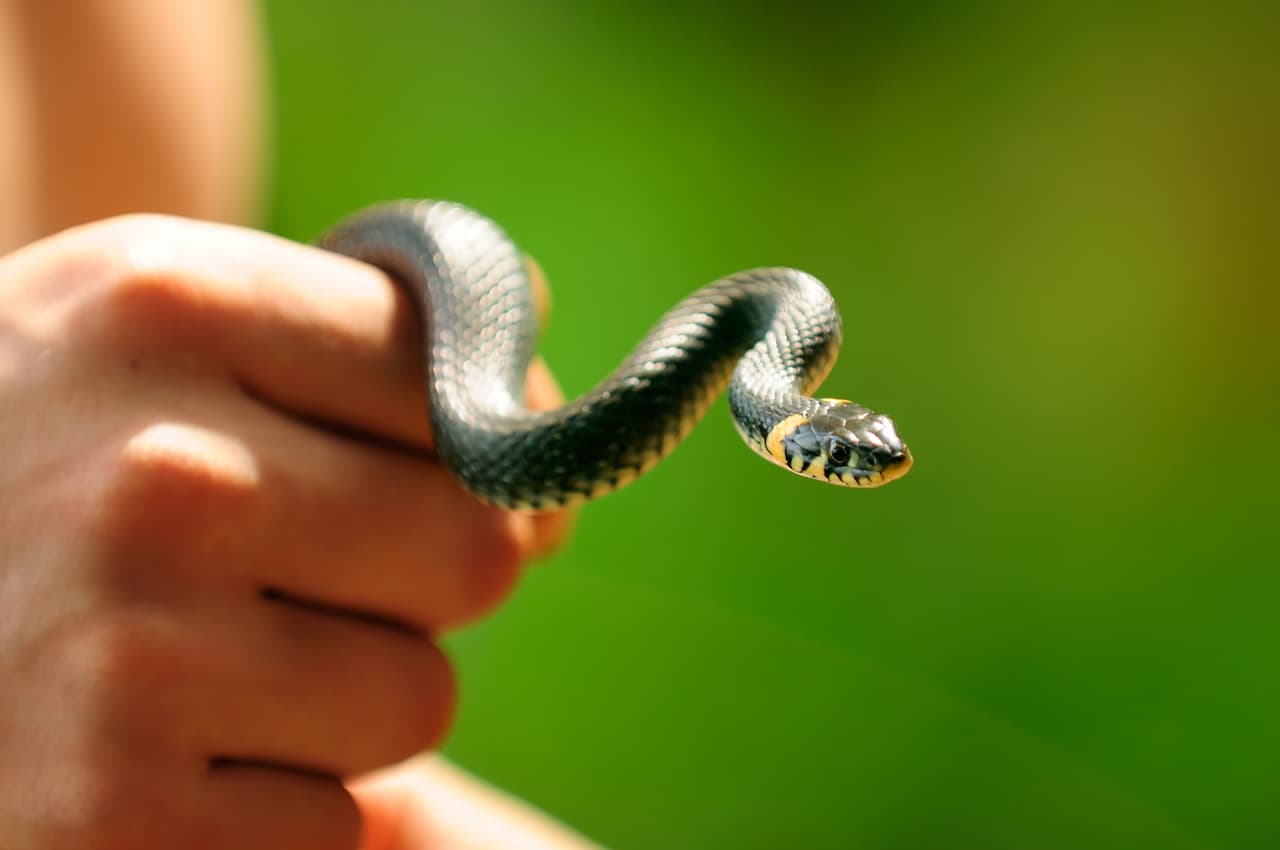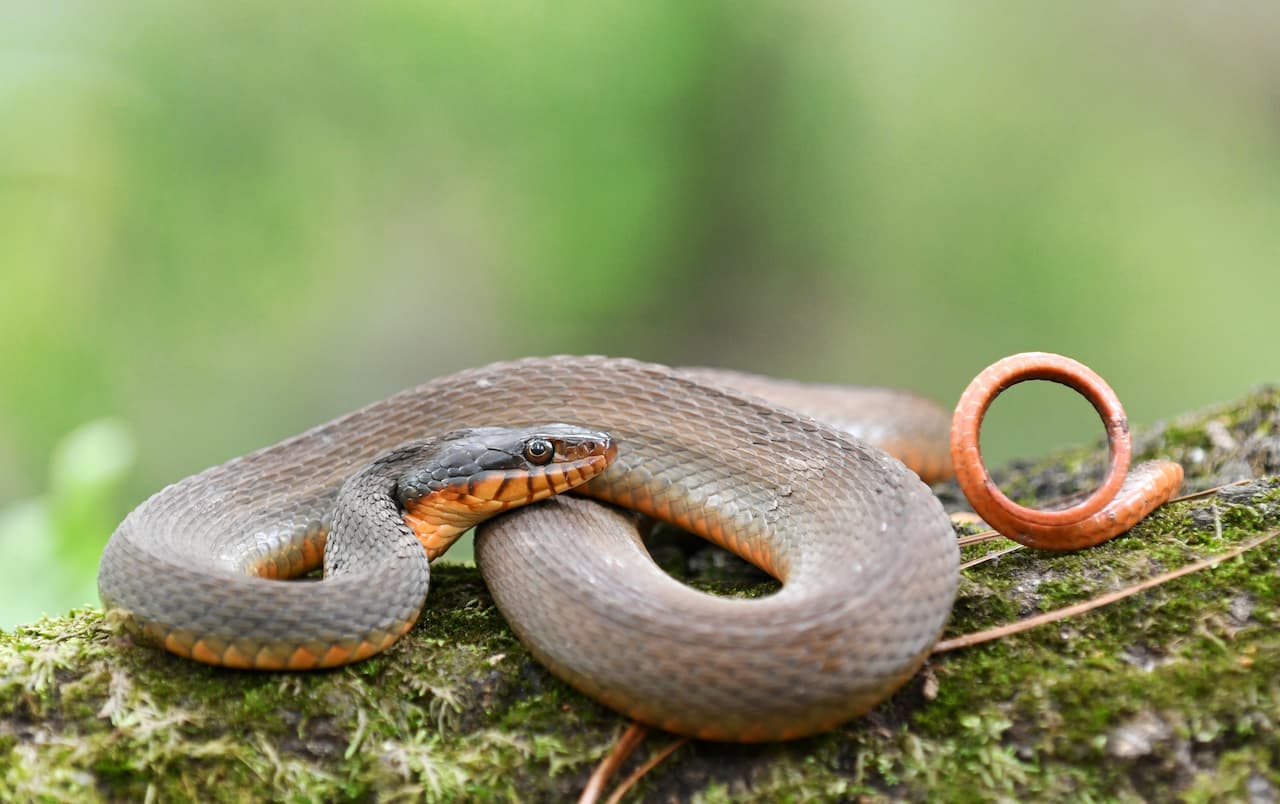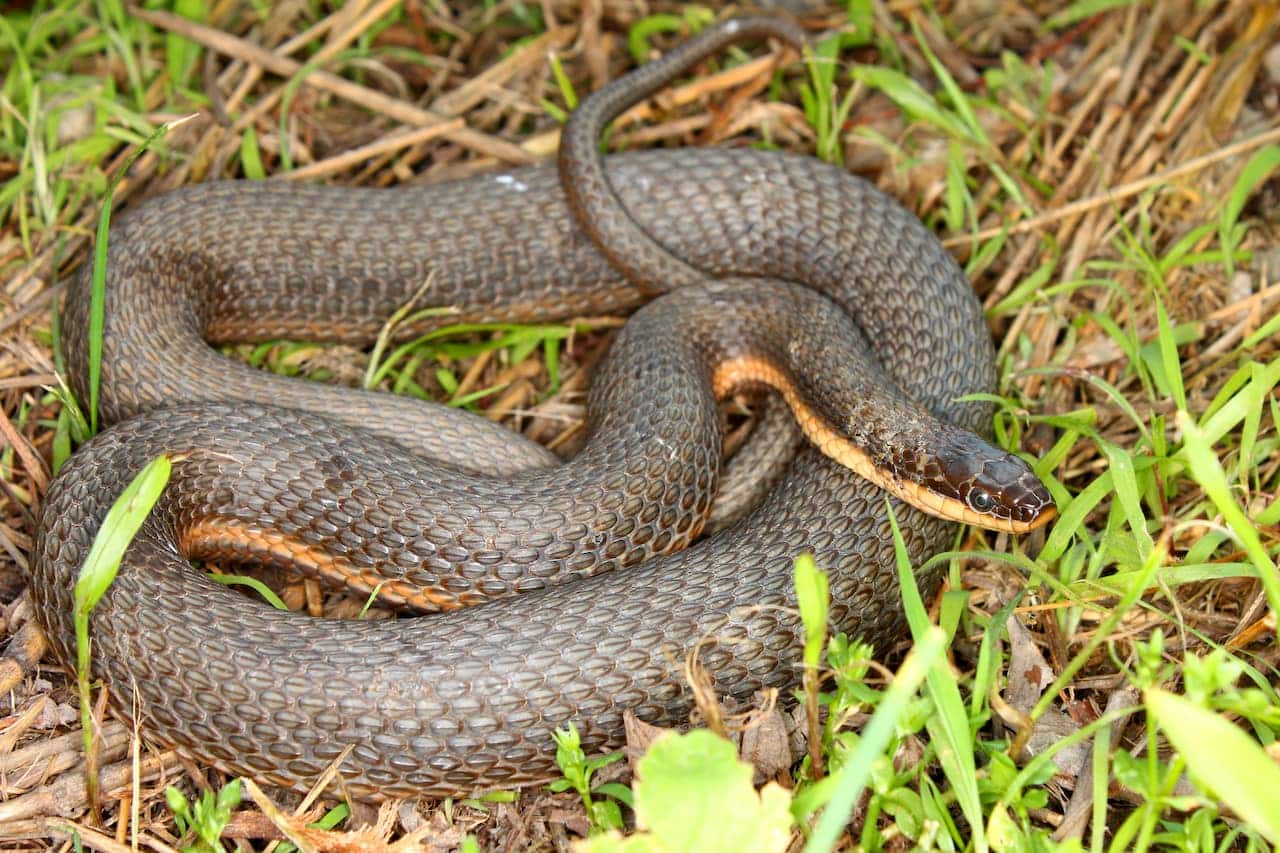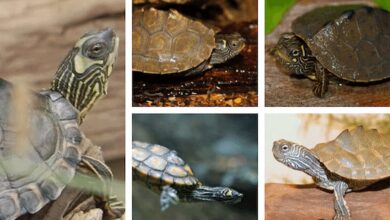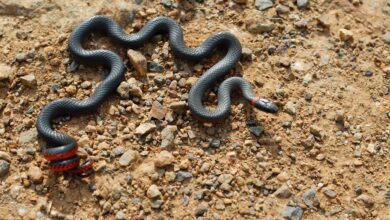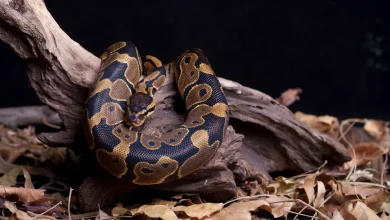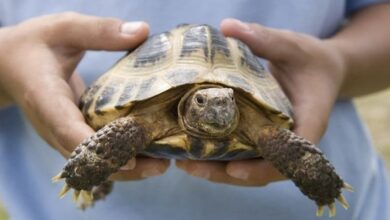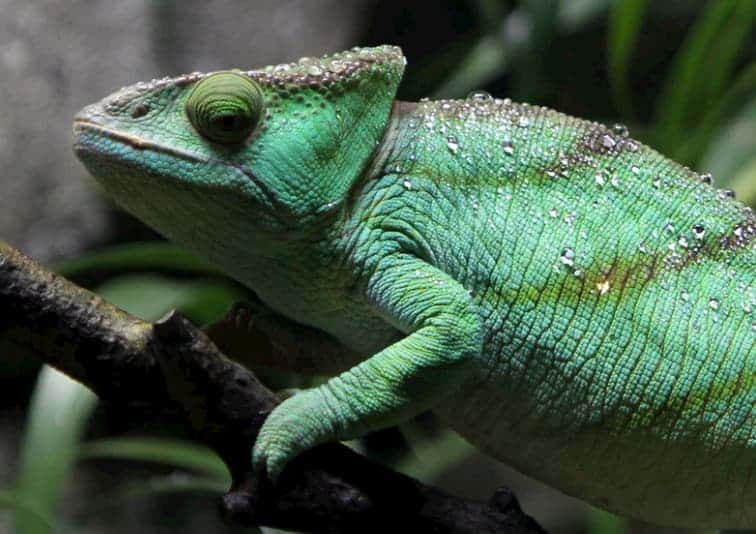Information on the Snakes of Maryland
Misconceptions about Snakes
Snakes are some of the most feared and misunderstood animals on earth. This fear and misinformation has produced much folklore and misconceptions about snakes. Of the twenty-seven kinds of snakes known to be found in Maryland, only two, the copperhead, and timber rattlesnake, are venomous. The majority of the others are completely harmless.
Snakes are very beneficial to man by controlling rodents and other harmful animals. When offered the chance, a startled snake would rather crawl away than bite.
Myths and Facts About Snakes
-
Myth – All water snakes are water moccasin’s.
-
Fact – The eastern cottonmouth (water moccasin) does not occur in the state of Maryland. Water moccasins can be found in the lower southeastern portion of Virginia. The most likely water snake you will see in Maryland is the Northern Water Snake – Nerodia sipedon sipedon.
-
-
Myth – Copperheads and black rat snakes interbreed to produce a venomous black snake or a black copperhead.
-
Fact – Copperheads and black snakes do not and cannot interbreed, it is genetically impossible. Copperheads bear live young and black rat snakes lay eggs. Many people confuse baby black rat snakes with copperheads because they have similar but not identical patterns. A baby copperhead is tan with copper colored saddlebag-shaped blotches and a bright yellow tail tip. A baby black rat snake is gray with charcoal colored squarish-shaped blotches and has grayish-black and white checker squares on the belly.
-
-
Myth – All Snake bites are fatal.
-
Fact – You are more likely to be struck by lightning than to die from a venomous snake bite. Pit Vipers are responsible for about 8,000 bites each year in the United States. Roughy 44% of venomous snake bites occurred through accidents, such as stepping on the snakes. Over 55% resulted from the victim grabbing or handling the snakes, and 28% of those did so while intoxicated. Deaths resulting from these bites are almost non-existent. About one-tenth of 1% of all snake bite victims die each year, and most of them received no medical treatment or first-aid. All snakes have teeth, but only venomous snakes have fangs.
-
-
Myth – Putting sulfur or moth balls in my yard will keep snakes away.
-
Fact – There is no snake repellent or trap that will keep snakes from a house or yard. Any substance that would deter a snake from the premises would probably make the house uninhabitable for humans. Snakes can enter a house through any number of places such as holes in masonry or wood, chimneys, and drain pipes. Snakes might enter a house to find shelter from the cold or because there is a supply of rodents or birds nearby. Preventive measures include eliminating breeding areas for rodents by removing wood and trash piles and sealing up or putting screen over openings where snakes can enter the house.
-
Outdoor Rules for Avoiding Snakebites
-
Never put your hands and feet in places you cannot see, or without first looking. Don’t sit on a log or rock pile without first looking about carefully, and watch where you place your hands and feet when climbing trees or rocks.
-
Stay on paths when hiking, and try to avoid areas with tall grass or underbrush. Don’t crawl beneath fences or into thickets without first looking carefully
-
If you see a snake, don’t disturb or try to kill them, and enver attempt to capture a venomous or unknown snake without proper training. Never fool around or show off with any type of snake dangerous or not.
-
Never handle freshly killed snakes especially venomous ones. A newly dead snake is capable of delivering a bite because still active nerves may trigger muscle contractions in the snake.
-
Don’t get within a snake’s striking range when attempting to identify it.
-
Always use caution when moving brush piles or other objects, such as boats, that have been on the ground for some time, especially if they are located near woods, fields, or swamps.
What to Look Out for
According to the Centers for Disease Control and Prevention , approximately 7,000-8,000 Americans are bitten each year by venomous serpents.
The injury is rare, but we would still rather not be smitten by a cottonmouth.
The majority of bites happen between March and September, depending on how warm the weather is. This is the time when snakes awaken from their winter sleep. This is also the time of year when most hikers and mountain bikers hit the trails.
The CDC identifies 4 types of venomous serpents in the U.S.
* Copperheads, which have hourglass-shaped, reddish-to-golden-tan bands on their bodies, dwell in swamps and near rivers in eastern states.
Water moccasins or dark brown or black Cottonmouths are found in Southeast wetlands.
Coral snakes are often mistaken as non-poisonous King Snakes in areas with wooded, sandy or marshy terrain in the south of the U.S.
* And rattlesnakes, distinguished by their triangular heads and scaly rattles at the tips of their tails, inhabit areas throughout the continent–mountains, prairies, deserts, and beaches. They’re like they took the habitat cues for “God Bless America” from its lyrics.
Snakes of Maryland List
Pit Vipers (Subfamily Crotalinae)
There are two species of pit vipers found in Maryland, the timber rattlesnake (Crotalus horridus) and the eastern copperhead (Agkistrodon contortrix). Both of these species are dangerously venomous and should be treated with caution.
Do not approach or try to handle these snakes as a bite could be deadly. As the name implies the pit vipers have a heat seeking pit between each eye and nostril. The pit vipers also differ noticeably from the colubrids by having vertical pupils, and undivided subcaudal scales.
Eastern Copperhead (Agkistrodon contortrix)
Former Name: Northern Copperhead
Timber Rattlesnake (Crotalus horridus) – Watchlist
Colubrids (Family Colubridae)
Maryland colubrids differ from vipers by having round pupils in the eyes, no heat seeking pit between each eye and nostril, a complete set of divided sub-caudal scales, and a series of large plates (scales) on the dorsum of the head.
There are 25 different types of snakes (including sub-species) from the Family Colubridae that can be found in Maryland. Due to the large number of genera (16) and the relatively few species within each genus (no more than two), identification of Maryland colubrids to genus is not discussed here. Species and sub-species descriptions follow.
Common Watersnake (Nerodia sipedon)
Former Name: Northern Watersnake
Plain-bellied Watersnake (Nerodia erythrogaster)
Former Name: Red-bellied Watersnake
Queensnake (Regina septemvittata)
Smooth Earth Snake (Virginia Valeriae)
Mountain Earth Snake (Virginia Valeriae Pulchra) – Endangered
Dekay’s Brown Snake (Storeria Dekayi)
Former Name: Northern Brownsnake
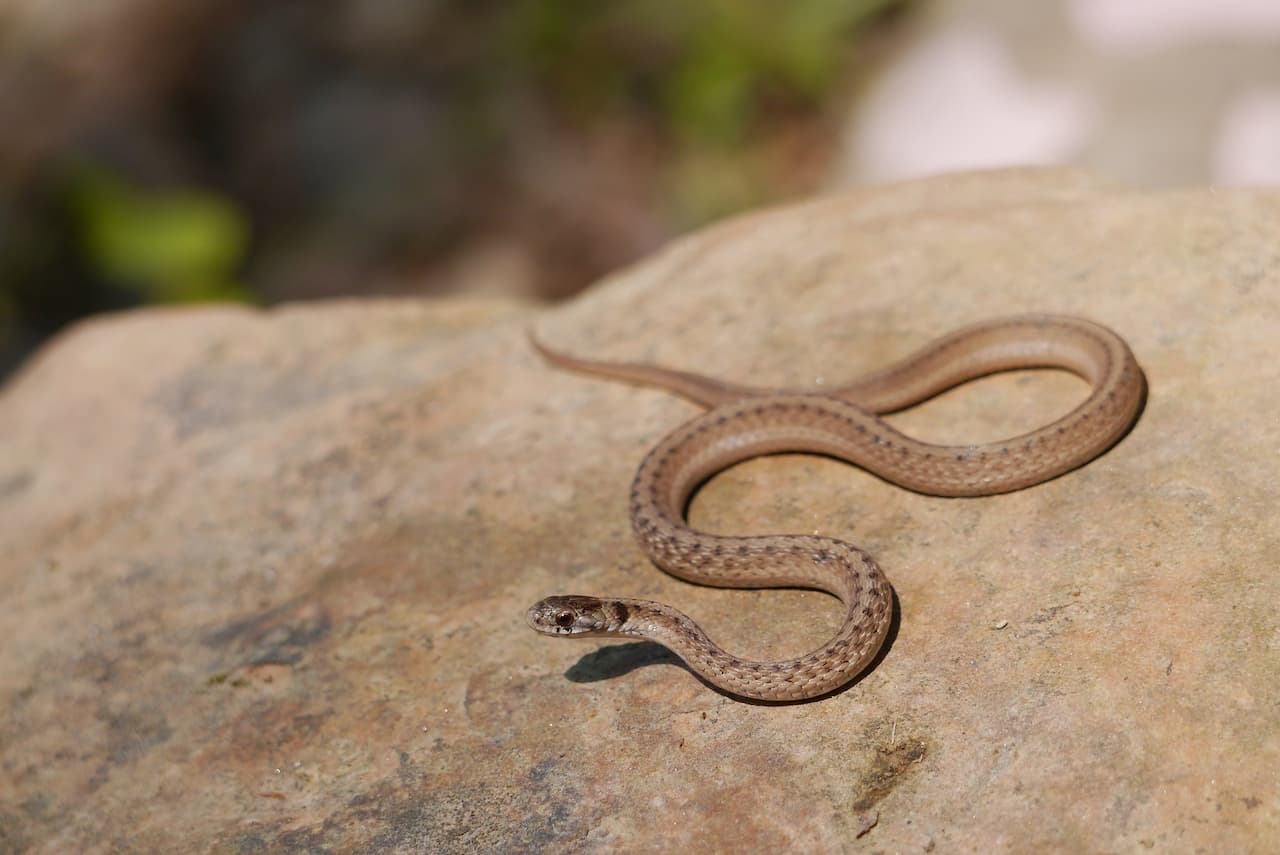
Red-bellied Snake (Storeria occipitomaculata)
Former Name: Northern Red-bellied Snake
Common Gartersnake (Thamnophis sirtalis)
Former Name: Eastern Gartersnake
Eastern Ribbonsnake (Thamnophis saurita)
Former Name: Common Ribbonsnake
Northern Ring-necked Snake (Diadophis punctatus edwardsii)
Southern Ring-necked Snake (Diadophis punctatus punctatus)
Former Name: Ring-necked Snake
Common Wormsnake (Carphophis amoenus)
Former Name: Eastern Wormsnake
Smooth Greensnake (Opheodrys vernalis)
Rough Greensnake (Opheodrys aestivus)
Former Name: Northern Rough Snake
Eastern Hog-nosed Snake (Heterodon platirhinos)
Rainbow Snake (Farancia erytrogramma) – Endangered
North American Racer (Coluber constrictor)
Former Name: Northern Black Racer
Eastern Pinesnake (Pituophis melanoleucus) – Historic
Former Name: Northern Pinesnake
Red Corn Snakes (Pantherophis guttatus)
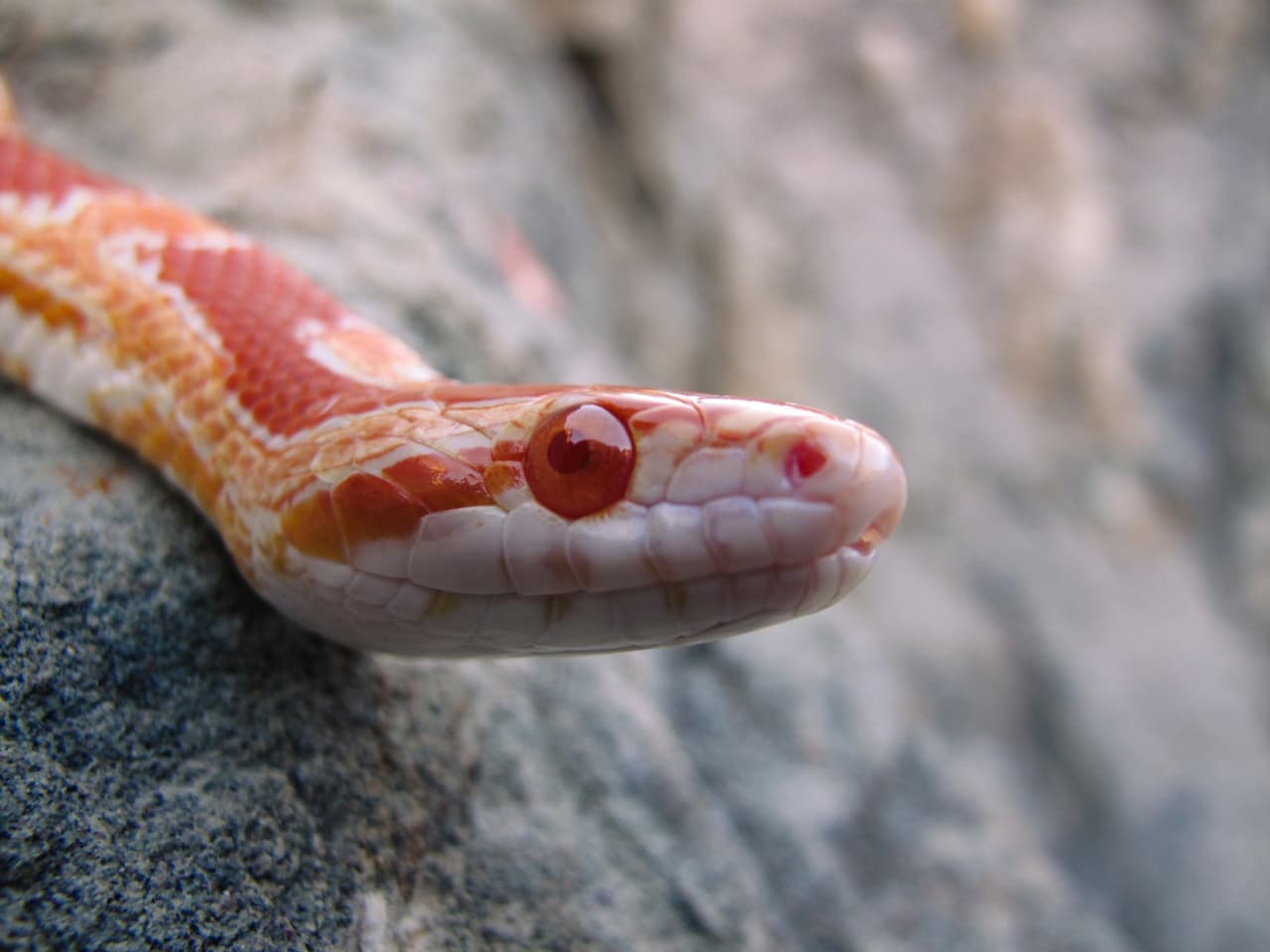
Eastern Ratsnake (Pantherophis alleghaniensis)
Northern Mole Kingsnake (Lampropeltis rhombomaculata)
Former Name: Mole Kingsnake
Eastern Kingsnake (Lampropeltis getula)
Eastern Milksnake (Lampropeltis triangulum)
Scarletsnake (Cemophora coccinea)
Former Name: Northern Scarletsnake

